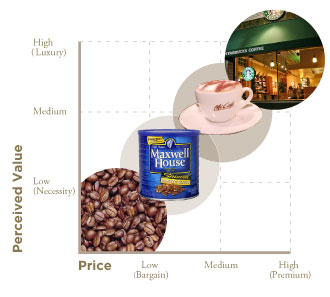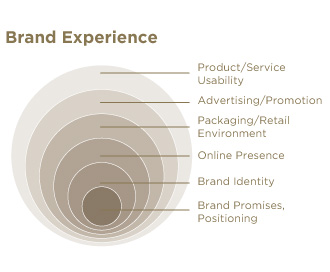In the last installment of “How Brands Add Value,” we discussed the importance of branding, and how it has the potential to create increasing value for a product, service or organization. By telling a compelling story about the quality of a product or service; inspiring customer loyalty through consistent and satisfying offerings; or promoting a certain lifestyle; brands have the ability to create and add real value to an organization. It is important to realize, however, that no matter how relevant these promises are to the target audience, there is another important consideration—how companies position, or “package,” their products or services can also greatly influence the value of a brand.
There is an ongoing and sometimes intense debate among professionals about how to position their offerings. One school of thought is that if a company provides services, they should try to package them as “products,” as that allows for efficiencies in terms of production and economies of scale. The problem with this approach is that while it is possible to cost-effectively reproduce an organization’s core competencies, it also can “cheapen” the perception of what is provided…products can become perceived as commodities, which ultimately leads to a devaluation of the brand (and more importantly, the price that customers are willing to pay for them).
 In the example above, adapted from Joseph Pine and James Gilmore’s The Experience Economy (Harvard Business School Press, 1999), the price customers are willing to pay for a product or service directly correlates to the perception that they have of it. Commodities, such as coffee beans, are generic and considered to be a “dime a dozen.” Maxwell House is similar in smell and taste to many other brands of coffee, and therefore must compete based on price. McCafé is a service found in McDonald’s restaurants that provides gourmet coffee, while the European-style coffee house experience provided by Starbucks allows them to charge US$3 or more for a cup of coffee.
Instead of trying to position services as products where they would compete on the basis of price, we should package them as memorable experiences—customized transactions in which each customer receives the highest level of service and satisfaction. Developing a brand identity that takes into consideration every interaction that the target audience will have with the brand—from its logomark and packaging; to marketing collateral and advertising; to web site functionality; to the retail/physical environment that it resides in; to the actual usability of the product or service; are all important factors that make up a Brand Experience.
In the example above, adapted from Joseph Pine and James Gilmore’s The Experience Economy (Harvard Business School Press, 1999), the price customers are willing to pay for a product or service directly correlates to the perception that they have of it. Commodities, such as coffee beans, are generic and considered to be a “dime a dozen.” Maxwell House is similar in smell and taste to many other brands of coffee, and therefore must compete based on price. McCafé is a service found in McDonald’s restaurants that provides gourmet coffee, while the European-style coffee house experience provided by Starbucks allows them to charge US$3 or more for a cup of coffee.
Instead of trying to position services as products where they would compete on the basis of price, we should package them as memorable experiences—customized transactions in which each customer receives the highest level of service and satisfaction. Developing a brand identity that takes into consideration every interaction that the target audience will have with the brand—from its logomark and packaging; to marketing collateral and advertising; to web site functionality; to the retail/physical environment that it resides in; to the actual usability of the product or service; are all important factors that make up a Brand Experience.
 Organizations that take this holistic approach to branding, by taking into account all of the ways in which customers interact with a product or service, and are able to create a unique, memorable experience through consistent and relevant brand promises, will achieve ultimate differentiation in the marketplace. In turn, the company will retain a valuable position at the forefront of customers’ minds, commanding a premium perception and price, and allowing for greater profitability. What’s more, the organization will have created a true competitive advantage that will be difficult, if not impossible, for the competition to replicate.
—Ryan Hembree, principal/brand strategy
Organizations that take this holistic approach to branding, by taking into account all of the ways in which customers interact with a product or service, and are able to create a unique, memorable experience through consistent and relevant brand promises, will achieve ultimate differentiation in the marketplace. In turn, the company will retain a valuable position at the forefront of customers’ minds, commanding a premium perception and price, and allowing for greater profitability. What’s more, the organization will have created a true competitive advantage that will be difficult, if not impossible, for the competition to replicate.
—Ryan Hembree, principal/brand strategy